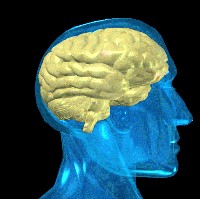Emerald BioStructures, a structural biology services company in Bainbridge Island, Washington, received a grant to lead a consortium to crystallize and solve the structure of the enzyme believed to be a key molecular mechanism behind Parkinson’s disease. The project, funded by the Michael J. Fox Foundation for Parkinson’s Research, includes researchers from the Helmholtz Association of German Research Centers.
The project involves finding inhibitors of the leucine-rich repeat kinase 2 (LRRK2) enzyme as a potential disease-modifying therapy for Parkinson’s disease. Lance Stewart, CEO of Emerald BioStructure says, “One of the best ways to find an inhibitor is to crystallize the protein and solve the crystal structure.”
The company says the LRRK2 enzyme plays an essential role in turning on and off many cell activities, and people with mutations in this protein are more likely to develop Parkinson’s disease. The LRRK2 enzyme is large and complex and has thus far been difficult to crystallize.
Parkinson’s disease belongs to a group of conditions called motor system disorders, which are the result of the loss of dopamine-producing brain cells. The four primary symptoms of the disease are tremor, or trembling in hands, arms, legs, jaw, and face; rigidity, or stiffness of the limbs and trunk; bradykinesia, or slowness of movement; and postural instability, or impaired balance and coordination.
Related: Biotechs Awarded Michael J. Fox Foundation Grants
* * *


 RSS - Posts
RSS - Posts
[…] This post was mentioned on Twitter by Alltop Science, Alan Kotok. Alan Kotok said: Company Leads Consortium to Crystallize Parkinson's Enzyme | #Science #Business http://t.co/db4XmLK #ScienceBusiness […]
[…] Read more: Company Leads Consortium to Crystallize Parkinson’s Enzyme […]
[…] Company Leads Consortium to Crystallize Parkinson’s Enzyme […]